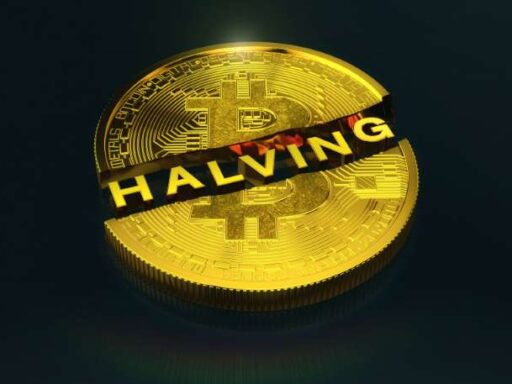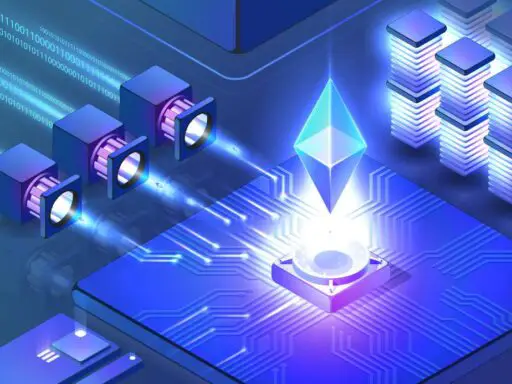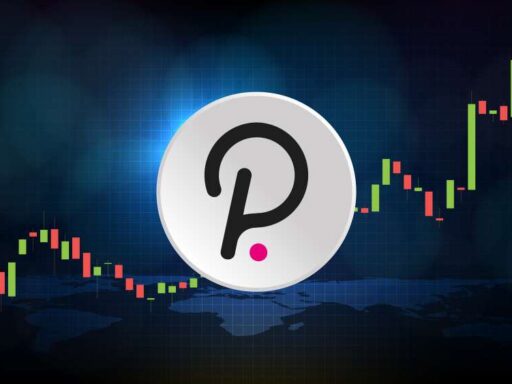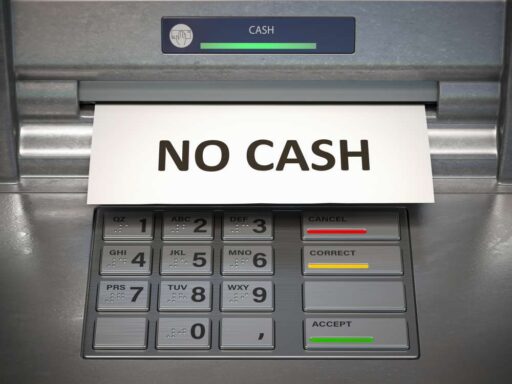

Rank: 5
In recent years, Solana has emerged as a prominent player in the ever-evolving world of cryptocurrency. As a high-performance blockchain platform that boasts lightning-fast transaction speeds and low fees, Solana has garnered significant attention from both investors and developers alike. However, with its complex technology and rapidly expanding ecosystem, understanding Solana can be daunting for newcomers to the space. This comprehensive guide aims to demystify Solana cryptocurrency by providing an in-depth analysis of its key features, unique selling points, underlying technology, and potential use cases. Whether you’re looking to invest in SOL tokens or develop decentralized applications on the platform, this article will equip you with all the information you need to navigate the dynamic world of Solana with confidence. Join us as we unravel the mysteries surrounding Solana and delve into what sets it apart from other cryptocurrencies in today’s fast-paced digital landscape. From its innovative consensus mechanism to its vibrant community of supporters, this guide will shed light on why Solana continues to gain momentum as a force to be reckoned with in the realm of blockchain technology.
The History and Evolution of Solana
Solana was founded in 2017 by Anatoly Yakovenko, a former engineer at Qualcomm. The platform was designed to address the scalability issues that plague many other blockchain networks, such as Bitcoin and Ethereum. Solana’s key innovation lies in its use of a unique consensus mechanism known as Proof of History, which allows for incredibly fast transaction speeds – currently up to 65,000 transactions per second. This puts Solana in direct competition with other high-performance blockchains like Polkadot and Cosmos.
As Solana gained traction within the crypto community, the team behind the project continued to develop and improve its technology. In March 2021, Solana launched its mainnet beta version called “Tour de SOL,” which proved to be successful in stress testing the network and demonstrating its capabilities under real-world conditions. With continuous updates and improvements being made by the team, it is clear that Solana has solidified itself as a major player in the cryptocurrency space with an ever-growing ecosystem of decentralized applications (dApps) and projects built on top of its platform.
Overall, Solanahas come a long way since its inception and continues to evolve rapidly alongside advancements in blockchain technology. Its focus on speed, scalability, and low fees has positioned it as a serious contender among other leadingblockchain platforms. With an expanding community of developersand investors supportingits growth,Solanasurelyhasa bright future aheadinthe worldofcryptoassetsand decentralized finance(DeFi).
Solana’s Unique Selling Points in the Cryptocurrency Market
Solana’s unique selling points in the cryptocurrency market primarily stem from its high performance and scalability. One of Solana’s key features is its lightning-fast transaction speeds, which can process up to 65,000 transactions per second – significantly higher than many other blockchain platforms. This impressive speed allows for near-instantaneous transaction confirmations, making Solana an attractive option for users seeking quick and efficient payments.
Another important aspect of Solana is its low fees, which are made possible by its innovative Proof-of-History consensus algorithm. This technology helps reduce network congestion and minimize costs associated with processing transactions, providing users with a cost-effective means of transferring value on the platform. These competitive advantages have positioned Solana as a popular choice among both investors looking to capitalize on its potential growth and developers seeking to build decentralized applications that require high throughput and low latency.
In addition to its technical prowess, Solana also offers a rapidly expanding ecosystem that includes various decentralized applications (dApps) spanning multiple industries such as finance, gaming, and NFTs. With support from renowned organizations like FTX Exchange and Alameda Research, Solana has attracted significant interest from institutional players looking to leverage its cutting-edge technology for their own projects. As such, Solana’s unique selling points make it a compelling option for those interested in exploring the vast possibilities of blockchain technology in today’s digital economy.
The SOL Token: Utility and Functionality
One of the key components of Solana’s ecosystem is its native utility token, known as SOL. The SOL token serves multiple functions within the Solana network, including powering transactions, participating in on-chain governance decisions, and staking for rewards. Users can also utilize SOL to pay for transaction fees and interact with decentralized applications built on the platform. With a finite supply of 489 million tokens, SOL’s scarcity adds value and security to the overall Solana network.
In addition to its utility within the network, SOL also acts as a means of incentivizing validators to secure the blockchain through staking. Validators who stake their SOL tokens help validate transactions and maintain network stability while earning rewards in return. This economic model encourages active participation from community members and helps ensure the long-term sustainability of the Solana ecosystem. Overall, SOL plays a crucial role in driving adoption, securing the network, and maintaining decentralization within the fast-growing Solana blockchain platform.
As an essential element of Solana’s infrastructure, understanding how to use and leverage SOL tokens is vital for anyone looking to participate in or build on the platform. Whether you are an investor looking to maximize your returns through staking or a developer seeking ways to integrate with decentralized applications on Solana, having a solid grasp of how SOL functions is critical for navigating this innovative blockchain ecosystem effectively. By demystifying the utility and functionality of SOL tokens, users can unlock new opportunities for growth and innovation within this dynamic cryptocurrency space.
Key Features and Advantages of Solana
One key feature of Solana that sets it apart from other blockchain platforms is its impressive transaction speed. With the ability to process over 65,000 transactions per second, Solana offers near-instantaneous settlement times for users, making it a highly efficient option for those looking to move assets quickly and at low cost. This scalability and fast performance make Solana an attractive choice for decentralized applications and projects that require high throughput.
Another advantage of Solana is its low fees, which can be a significant factor for investors and developers seeking cost-effective solutions in the cryptocurrency space. With minimal transaction costs, users can save money on each transaction compared to other platforms with higher fees. This affordability makes Solana a competitive option in the market and allows for broader access to blockchain technology without sacrificing speed or security.
In addition to its speed and low fees, Solana also offers a unique consensus mechanism known as Proof of History (PoH), which helps to enhance security and efficiency on the network by providing historical data about transactions within blocks. This innovative approach sets Solana apart from traditional blockchains and contributes to its overall robustness as a platform for decentralized applications. Overall, these key features and advantages demonstrate why Solana has become a popular choice among both investors and developers in the cryptocurrency space.
Understanding Solana’s Technology Stack
Solana’s technology stack is comprised of several key components that work together to enable its high performance and low fee structure. At the core of Solana’s architecture is a unique consensus algorithm known as Proof of History, which helps to ensure the integrity and efficiency of transactions on the network. This innovative approach allows Solana to achieve transaction speeds that are orders of magnitude faster than many other blockchain platforms, making it particularly well-suited for applications requiring real-time or high-frequency interactions.
In addition to its novel consensus algorithm, Solana also leverages a cutting-edge programming language called Rust, which has been optimized for performance and security. This allows developers to build powerful decentralized applications (dApps) on the platform with ease, while benefiting from robust security features and enhanced scalability. Furthermore, Solana’s use of parallel processing techniques and sharding technology enables it to handle a vast number of transactions simultaneously without compromising speed or reliability. Overall, by combining these advanced technologies into a cohesive stack, Solana has established itself as a leading blockchain solution for projects looking to scale rapidly and efficiently in the increasingly competitive cryptocurrency landscape.
Solana’s Ecosystem and Partnerships
Solana’s ecosystem is continuously growing and expanding, with a wide range of projects being developed on its blockchain platform. From decentralized finance (DeFi) applications to non-fungible tokens (NFTs) marketplaces, the possibilities are endless within Solana’s vibrant community. Partnerships play a crucial role in this expansion, as they help to bring new ideas and innovations to the table while also providing resources and support for project development.
Some notable partnerships that Solana has secured include collaborations with leading cryptocurrency exchanges such as Binance and FTX. These partnerships have helped to increase liquidity for SOL, the native token of the Solana network, making it more accessible to a wider audience of users. Additionally, strategic alliances with prominent technology companies like Chainlink have enabled Solana to integrate cutting-edge oracle services into its platform, further enhancing its capabilities and functionality. With an ever-growing list of partners backing its vision, Solana continues to cement its position as one of the top players in the cryptocurrency space.
The Future of Solana: Potential Challenges and Opportunities
As Solana continues to gain traction in the crypto world, it faces a number of potential challenges that could impact its future success. One key challenge is scalability, as the platform aims to handle thousands of transactions per second without sacrificing decentralization or security. Achieving this level of scalability will require ongoing development and optimization to ensure that the network can keep up with growing demand.
On the flip side, Solana also presents numerous opportunities for growth and innovation in the cryptocurrency space. With its high-performance blockchain technology, Solana has the potential to revolutionize industries beyond just finance, such as gaming, decentralized apps (dApps), and more. As developers continue to build on Solana’s platform and integrate new applications, there is significant room for expansion and diversification within the ecosystem.
Overall, while Solana may face challenges in scaling its network and maintaining decentralization over time, it also offers exciting opportunities for innovation and growth within the cryptocurrency space. By staying ahead of technological developments and fostering a vibrant developer community, Solana has the potential to solidify its position as a leading player in the industry for years to come.









